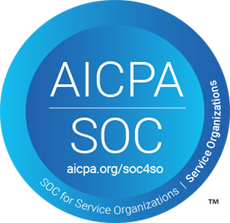Managing patient referrals for continuity of care continues to be quite tricky, especially when moving from acute to post-acute settings. While this path of care is hardly rare these days, what complicates the matter is the varying degrees and capabilities of the technology available to the providers across the continuum. Where hospitals and post-acute providers affiliated with large health networks have robust communication tools and electronic workflows, many providers such as Home Health and Skilled Nursing are still chasing paper documents and fighting with fax machines. Kno2 has been really encouraged by how the 360X closed loop referrals use case can level up referral management, namely for the benefits available to the post-acute sector. And many of those benefits are beautifully on display in the very first step: requesting the referral.
Securing a Timely Referral Appointment is Critical…and 360X Makes this Possible!
If it’s been a hot minute since you’ve read about the 360 Exchange (“360X”) Protocol to leverage electronic communication for several key, initial use cases, let’s remember that closed loop referrals were prioritized by the ONC’s efforts…and rightly so! The specifications for 360X are brilliant because they capitalize on many tools already well-established for most healthcare providers, even those with only a Direct address. And we say “only” with total respect; Direct Secure Messaging is a fantastic, simple tool to implement STAT! (See what we did there?) Speed of implementation is huge in a healthcare landscape that is poised to drastically change over the next decade, as is an intuitive workflow that serves busy office staff and physicians under pressure.
So what does 360X have to do with timely referral appointments? Connecting providers and staff via the specifications outlined in the 360X closed loop referral profile, such as a Direct inbox used in a web browser or EHR, allows for the electronic flow of information in a way that is secure and trackable. A request to a specialist office for a patient appointment can be received, responded to (accepted or declined), and followed up on to send demographics and patient records to facilitate an informed, empowered encounter…all within minutes, while the patient is still in office! What’s key here is that healthcare professionals are trying to facilitate a smooth hand off that is prompt and digital to reduce the likelihood that the patient will fail to follow through on the appointment or that there will be a ton of waste in the process of waiting for responses, waiting for results, waiting for approval…there’s a lot of waiting involved. When 50% of professional referrals never result in a doctor’s visit, something is clearly not working.
Patient Care Coordination is Bolstered by 360X Referral Management
Taking the administrative burden off of patients who are, let’s remember, probably not feeling super hot if they’re bouncing between specialists, is a huge win for the healthcare experience. Not only that, the providers on each end are actively communicating, truly managing the referral lifecycle, because of simple interfaces that give hospitalists access to Home Health, who have access to SNFs, who have access to specialty clinics, and so on.
And let’s take this moment to remember that the 360X protocol isn’t a product. It’s not some new vendor technology on the market to try to understand. These are well-defined use cases, with shared rules of engagement, using a flexible set of widely-available tools (Direct just being one example), to create a holistic care experience that benefits physicians, their staff, and their patients. This is exactly the sort of thing that makes us cheer (and jump on board early on, which we did), and we look forward to exploring how else our Kno2 toolset can be used to level up referral management…and all the other use cases to follow!




